Without question, the most dangerous activity the average prepper, or anyone in the developed world, will engage in on a daily basis is operation of an automobile.
In the U.S. and other Western nations car wrecks are common and often deadly incidents that claim tens of thousands of lives a year, and leave many thousands more people critically injured, maimed or crippled.
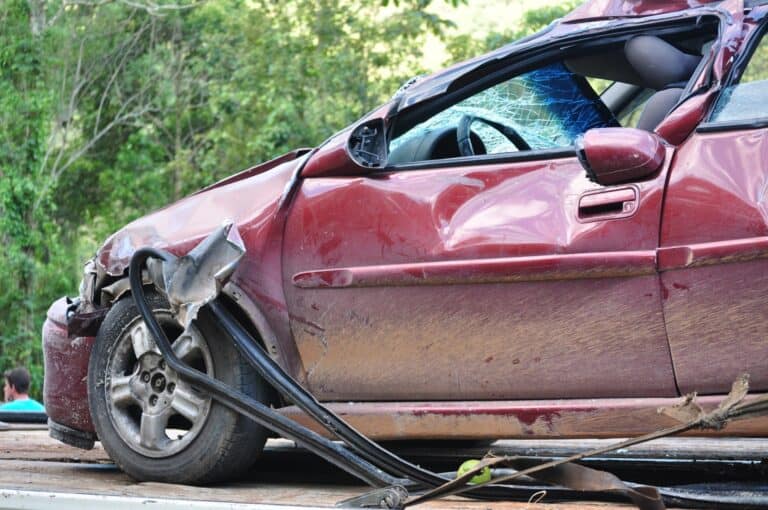
If you claim to be serious adherent to the path of readiness and self-sufficiency, but have not undertaken learning all you can about prevention and response to car crashes, you are missing the forest for the trees…
Blackouts, wildfires, meteor strikes, societal breakdown and zombie outbreaks are all spectacular and more “fun” to prepare for, but make no mistake the most likely threat is the one you must prepare for first.
In the interest of equipping the readership with all the info they need to know in one place, today’s post will be a comprehensive, prepper-centric guide to car crashes: the stats, the mechanics and what you need to know to both avoid and respond to one should you or someone else wind up in one.
Keep reading and we’ll get started…
Scope of the Threat: Auto Crash Stats
In the United States, the National Highway Traffic Safety Administration, or NHTSA, calculates that in 2010 (the last year comprehensive data was collated) an estimated 5,419,000 crashes occurred. Those crashes resulted in just under 33,000 fatalities and over 2,200,000 injuries. Of the killed, 2,000 of them were children under the age of 16 years old.
Staggeringly, that same agency estimates over 3.6 million people died as a result of motor vehicle crashes in the U.S. from 1899 to 2013, automobiles becoming somewhat more widespread since their invention in 1886. That is a truly staggering number of lives lost, and from so innocuous a thing.
Everyone knows someone whose life was affected by a car wreck, either directly or indirectly. This combined with the severity of the average incident should impress upon you the seriousness and urgency with which you must make your preparations.
Today, a hair over 100 people a day die in wrecks big and small, and of all kinds all over the country.
While their suddenness and seeming unpredictability may lend the impression that they are unavoidable akin to an act of nature, the huge majority of wrecks can be prevented, avoided or their severity mitigated by following good procedure and being prepared for them.
All kinds of things factor into the chances of a crash occurring: the road and traffic conditions, the vehicle(s) design, performance and maintenance, driver alertness, skill and potential impairment or distraction, weather and so forth.
Understanding this interplay of variables, at least on a surface level, is essential to recognizing when circumstances for a crash to occur are at their highest.
In the next sections, we will get into the fine details of crashes, and how each kind affects your chances of injury or survival, and then what you need to do and know to keep yourself out of the “statistics” column.
Types of Auto Crashes
While your mental impression of a crash may be super simple- squealing tires, crunching metal, shattering glass, fin- the reality is that crashes fit into distinct subsets which you should concern yourself with.
For instance, not all crashes involve two cars; some involve multiple or only one car. The collision may occur between a car and another or multiple cars, a building, terrain feature, animal or object on the road. No collision may occur at all in a crash; a vehicle may flip or roll if pushed beyond its performance envelope or from attempting to maneuver to avoid an obstacle.
Further, crashes are broadly categorized into one of 6 major types. Almost every crash is unique, involving a massive number of variables, but assuming all other things equal the type of collision will have great influence on the severity for occupants of the vehicles, both the striking and struck.
The types of collisions and their statistical occurrence in the United States are:
#1. Rear Impact – (Appx. 1.8 M crashes, 30% of all US crashes; 5 ½ % of US fatal crashes)
Getting “rear-ended” means one vehicle strikes the rear of another vehicle, whether moving or not. This is most commonly caused by a distracted driver, silly behavior behind the wheel ala tailgating, brake-checking or hard launching, or by an exceeded performance envelope, usually due to bad road conditions from weather.
Typical injuries for occupants of the vehicle involved in an average rear end collision will be whiplash, hernias and torso injuries if seatbelts are not worn. Of particular concern in a rear end collision are occupants riding in the back row of a struck vehicle with a short crumple zone, e.g. your typical minivan.
#2. Head-On Collision ( Appx. 123,000 crashes, 2% of all US crashes; 10% of US fatal crashes)
The grimly simple head-on crash is exactly what it says on the carton: two vehicles striking each other front to front.
While comparatively rare, they are often fatal and massively injurious for occupants of both involved vehicles. Typically caused by a vehicle leaving its lane for some reason, and entering the opposing lane when no barrier exists to prevent it.
A variant of this crash, the glancing head-on collision, commonly called a sideswipe, occurs when one of the closing vehicle contacts the other at a very oblique angle on the side, resulting in a direct impact that is far less severe than a direct hit, but also highly dangerous since it often results in loss of control for both vehicles, and then secondary crashes.
Injuries for occupants are almost always severe head, neck and torso injuries with injuries to the hips and limbs being very common also. In this type of crash, safety systems and restraints are critical to surviving. Those who do not wear seatbelts in this type of crash are often killed or crippled.
#3. Side Impact (Appx. 1.8 M crashes, 29% of all US crashes; 20.7% of US fatal crashes)
The classic “t-bone” or broadside hit, wherein one car strikes the other in the side. A highly lethal and dangerous crash that often occurs in any intersecting lanes of traffic, or, usually less severely, in a parking lot when one vehicle fails to yield or runs a traffic signal/sign.
These impacts are so dangerous die to the chance that the striking vehicle may hit the other directly on the passenger compartment side, where there is very little room for deformation before human bodies are directly affected.
Compared to similarly energetic front or rear end collisions, these are worse. Even modern safety systems struggle to dampen damage dealt from these impacts.
Occupants in the striking car will be dealt injuries like a head on collision. Occupants of the struck vehicle will be dealing with chest, lower limb, head and abdominal injuries. Occupants of the struck vehicle will often collide with each other or the interior of the vehicle itself before rebounding into secondary impacts. A double threat.
#4. Run-Off-Road Collisions (Appx. 1 M crashes, 16% of US crashes; 32% of US fatal crashes)
The typical single vehicle crash, and statistically the deadliest. Whenever a vehicle leaves the road and hits a terrain feature or other object (structure, tree, piling, pole, boulder, etc.) that is fixed in place you can expect severe, hideous injuries and death.
This is because there is less absorption of energy compared to something that will yield and move upon impact.
These crashes occur for a whole mess of reasons: driver distraction or impairment leading to a botched or missed turn, an attempt to avoid another vehicle, animal or piece of debris or simple loss of control from inclement road conditions.
Additionallym a car that leaves the road may wind up in a body of water, leading to a special threat to occupants from drowning. See subsequent sections for more info on that scenario.
Injuries in these crashes correspond to the orientation of the vehicle when it strikes the object. In almost all cases, the severity of the injuries are greater since the vehicle is striking a fixed object. These crashes also occur as a secondary impact when one vehicle is blown off the road from being struck by another.
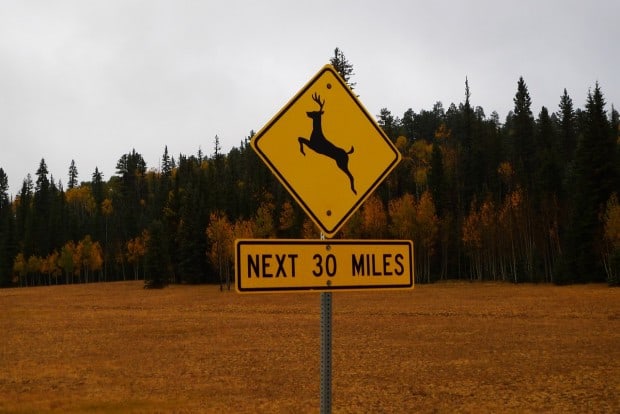
#5. Collisions with Animal ( Appx. 275,000 crashes, 4 ½ % of US crashes; 0.5 % of fatal crashes)
A common but far less lethal crash as far as collisions go, thanks to the enormous disparity in mass between an average motor vehicle and even the largest of North American animals.
This is exactly what it sounds like: an animal is hit and usually messily killed by a car or truck, resulting in significant damage to the vehicle and a dead or crippled critter.
These often occur in rural areas where infrequent traffic is more likely to see an animal loiter on or near a road, waiting to be plowed by a driver who is distracted, tired or going too fast.
One of the biggest risks is that the driver will further lose control and then leave the road, striking an immoveable object as above. Passengers also risk being struck by any parts of the animal that pierce the windshield.
#6. Rollover (Appx. 141,000 crashes, 2 ½ % of all US crashes; 11% of US fatal crashes)
Whenever a vehicle rolls over for any reason, the damage to man and machine will be severe. Often times these occur after striking a fixed object, but a significant number happen in reverse; the vehicle rolls then strikes a fixed object, often with disastrous results. Note that rollovers have the highest fatality rate by type of crash.
Vehicles can be rolled when struck by another vehicle, or by exceeding their handling limits, especially on an incline or banked curve. Rollovers are highly likely to occur whenever a vehicle is skidding, and is perpendicular to the direction of travel.
At that point, the tires entering soft ground or striking a low barricade will handily tip most vehicles over. The likelihood of a rollover is increased for vehicles with high centers of gravity like ones using heavy-duty suspensions, SUV’s and fullsize vans being typical and common victims of a rollover.
Rollovers are especially lethal when occupants are ejected, which is drastically more likely to occur when, you guessed it, seatbelts are not worn.
Additionally, many vehicles roof panels do not withstand crush forces very well, and a secondary collision once flipped means the roof can easily deform into the occupants.
Vehicles with roll bars fare much better than those without in a rollover, and are commonly equipped on vehicles likely to roll in certain circumstances, the Jeep Wrangler being the most well-known domestic example.
Predictably, in a rollover injuries are usually severe head and limb trauma when belted, and if not you can expect a smorgasbord of carnage as the occupants are helplessly smashed to and fro inside the vehicle before being ground into meat or ejected.
#7. Collision with Pedestrian/Bicyclist (Appx. 114,000 crashes, only 2% of US crashes; 13 ½ % of US fatal crashes)
The meeting of an automobile with a pedestrian or bicyclist always ends in tragedy. Depending on the type of follow-on crash injuries will be expected accordingly. Unfortunately the injuries to the pedestrian/bicyclist are usually crippling to fatal.
Now that we have learned of what we can expect from a car crash, we can learn what we must to avoid and mitigate them.
Prevention: Factors, Skills, Procedure and Mindset
As the causes of motor vehicle crashes are varied and intricate, so are the means by which we prevent them. The following sections all detail what factors you have control over, that is things that you can change to decrease your chances of being involved in a crash, or at least reduce the severity of a crash.
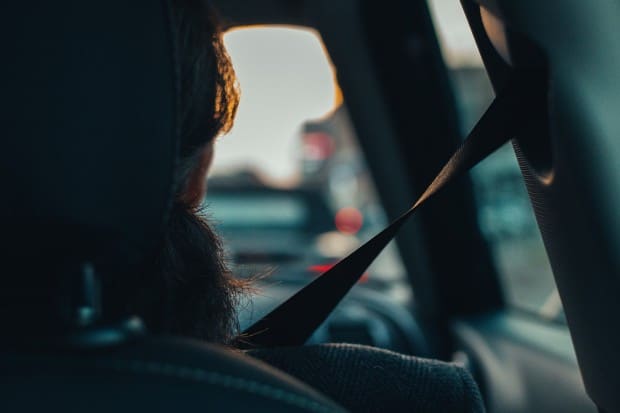
Seat Belts
Across all studies analyzing every type of crash, it has been proven time and time again that the chances of occupant injury or death are far higher when seatbelts are not worn. Generally, a worn seatbelt decreases the risk of deathby at least 45%.
Even today, somehow, some way, seatbelt use is still contested. Some folks worry about being trapped in their vehicle after a crash, especially one where there may be a fire or risk of drowning. Such concerns are not completely unmerited by are far less likely than the chance of being maimed or killed because it was not worn.
Furthermore, the chances of a driver losing control of their vehicle from a relatively minor collision and then causing a greater crash are significantly increased when seat belts are ignored.
Finally, convenient escape and extrication tools exist which are readily stowed in the passenger cabin to allow occupants to cut themselves out of a seat belt and break window glass even with one hand.
Bottom Line Up-Front: Wear your seatbelt! If you don’t, you are damned wrong, end of discussion.
Vehicle Speed
The speed of the vehicle(s) involved in a given crash is a huge factor in how severe the outcome will be. The risk of injury, and the likelihood of severe injury and death are all higher the faster a vehicle is travelling when the crash occurs.
The specific lethality of the crash is determined by how quickly the speed changes upon impact. Take for instance the example of a car hitting another car rolling down the highway.
The rear-ending car travelling at 65mph hits the other, travelling at about 50mph. While subsequent impacts with surrounding terrain and objects may be spectacularly severe, the initial impact is not so bad.
Now take that same rear-ending car at 65mph and have it strike a solid brick building. The results for the occupants will almost certainly be lethal.
Going over the speed limit, or too fast for road and visibility conditions are leading causes of crashes, with excessive speed being a significant contributor to fatal crashes. Also, going too slowly also results in a higher risk of being involved in a crash.
Always make it a point to travel at the speed limit, and use your head to keep pace with traffic.
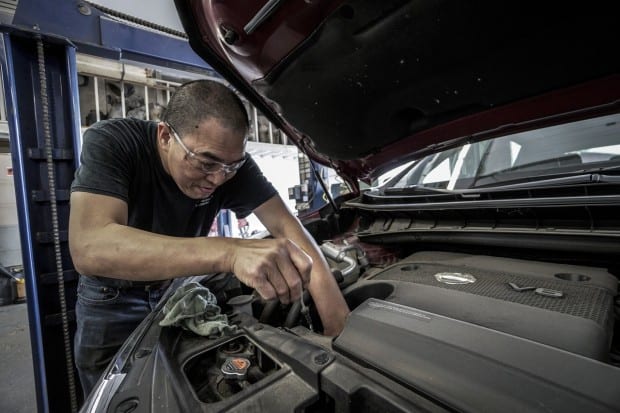
Vehicle Performance and Maintenance
Not all vehicles are created equal. Some vehicles benefit from better performance, others from better safety systems.
Some vehicles have both, while nicer modern makes have all three plus latest generation crash-avoidance and driver monitoring systems. All of these technological systems contribute greatly to evading or countering the effects of a crash.
Anti-lock brakes, brake assist systems, traction control, anti-fatigue alarms, pre-emptive braking, blind spot monitoring, front and side airbags, deformable bumpers, sacrificial crumple panels, unibody construction techniques, thicker pillars and smooth “deflectable” exteriors all add up to phenomenally capable cars, even with rookie or diminished drivers at the wheel.
No technological system can truly prevent or absolve the effects of a crash, however.
But not all vehicles benefit from modern technology. Older vehicles may have seatbelts alone, not even anti-lock brakes or airbags. Nonetheless, old or new, you can always control how well-maintained and cared for your vehicle is, and you should take pains to ensure all essential systems remain in 100% operational capacity.
Tires, brakes and suspension components are critical for maintaining control of the vehicle. Lights of all kinds ensure that you can see and be seen. Drivetrain components keep the vehicle moving under its own power, able to respond to your commands.
Seats should be kept upright and an appropriate distance from the steering wheel and dash (about handshake distance), mirrors and windows should be kept spotlessly clean for best visibility and reduced glare. Loose items should be stowed or secured so they are not thrown about as missiles in the passenger compartment on impact.
All of these things, taken together, will significantly decrease the chances of being injured or killed in a crash.
Driver Skill and Impairment
Driving is a skill, and one that should be practiced and trained in pursuit of a desired outcome. Experience counts, as the majority of crashes, and fatal ones involve young and beginning drivers.
More than experience, training in defensive driving, crash avoidance, inclement conditions operation and more will forearm you with the skills to evade all kinds of mishaps and potential accidents, as well as minimize the severity of impact if it is unavoidable.
The single biggest thing you can do to prevent a crash is to ensure you are in ship-shape for driving: do not drive if you are very tired, and try to get off the road after no more than 10 straight hours of driving as most accidents resulting from fatigue occur then.
Ensure that you are not intoxicated: neither by alcohol, illicit or legal drugs.
Whiskey and marijuana will severely hamper the coordination and reflexes needed to safely pilot a motor vehicle down the roadways next to others, but so too can innocuous drugs like anti-histamines and sleep aids. Essentially if it over-excites or blunts your nerves, you should not be driving.
Even without any chemical interference or sleep deprivation, simple distraction is an enormous cause of crashes of all kinds. Dialing a number or texting on the phone, fiddling with radios and navigation systems, day dreaming, horseplay and other non-essential tasks must be expressly forbidden and ruthlessly curbed for continued safety on the road.
Do not forget for a moment!
You are piloting a multi-thousand pound machine down a roadway that is packed with others like it, each containing a person. The road is similarly lined with people. You are not riding a giant marshmallow down a grassy field past houses made of gummy bears.
Complacency is the most subtle and evil killer of all. Especially if you have been a long-time driver, you must redouble and commit your efforts to being an active, present driver, and one constantly looking to improve.
In Short…
You can keep yourself and your passengers safe when driving by doing the following:
- Wear Your Seatbelt! No exceptions.
- Keep Your Car Well-Maintained. A good running vehicle is less likely to fail to perform when needed. Don’t forget your seat belts and airbags.
- Use Good Driving Practices. Go the speed limit, check blind spots, always leave plenty of room, always look twice when crossing any intersection, and drive accordingly in bad weather.
- FOCUS! Do not be distracted by phones, radios, passengers, etc. Always be looking for work, i.e. be looking for the next danger point or potential crash.
- Choose a Performance Vehicle, if Possible. Meaning one with modern safety and accident mitigation features. Old cars may be cool, sometimes, but they are light years away from the safety and capability of newer machines.
If a crash is imminent:
- Stay Cool. You are trained, and practiced for just such an occasion.
- Decide. Where is the exit? How can you get out of this? Turning? Braking? Perhaps accelerating?
- Execute.
- Steer smoothly. Don’t jerk the wheel entering or exiting a turn.
- Brake accordingly. Pump the brakes if you don’t have an ABS system, press firmly if you do.
- Look where you want to go, don’t look at what you don’t want to hit. You will steer your car to follow your eyes.
- Recover. Once clear of the incident, start looking for work; rejoin the normal traffic pattern, slow down or speed up as appropriate.
If a crash looks unavoidable:
- Reduce Speed as Quickly as Possible. Speed is a major killer.
- Avoid Side Impacts. Steer to orient your car to strike with the front or rear.
- Avoid Head-Ons and Hitting Immoveable Objects at All Cost. These are both terribly deadly types of crashes. If you must strike either, steer for a glancing hit to deflect off of and hopefully maintain momentum.
Crashing into Water
The prospect of crashing into water is horrifying. The idea of being trapped in a slowly sinking car, water rising to surely drown you is terrible in the extreme.
Luckily, a water crash is definitely survivable, and likely more so than you are imagining. The Devil is in the details though, and you must execute the correct course of action and do so quickly to survive.
The key lies in getting out through the windows. Contrary to popular conception, waiting for water to fill the car long enough to equalize pressure and allow you to open the door against the weight of the water means your head will be under water for a bit. Not good, especially when stress and panic are burning through your body’s oxygen supply.
Should you find yourself in a watery crash, one where the water is deep enough to submerge you, do the following:
- Stay calm. You have anywhere from half a minute to two minutes to enact your escape. Your care will probably not sink as quickly as you are imagining. Use your time wisely! Keep your head.
- Remove seatbelt immediately. If it does not release, use your knife or pre-placed escape tool to cut if free. Help other passengers do the same immediately.
- Doors are options, but windows are best. If you react quickly enough you may be able to get the door open and escape. Be warned: opening the door will sink the car quicker. Not the best play with passengers in the car.
- Roll/Break window. As soon as possible. Even electric windows will still function until water gets high in the vehicle. Know that both electric and manual windows will be harder and harder to operate as the water rises. If the windows will not function, immediately utilize the glass breaker on your rescue tool. Move quickly! Punching or kicking out a window is very difficult.
- Escape. When the window opens/breaks, you’ll get hit with a surge of water. Keep your wits, and escape through the window. Swim for the surface.
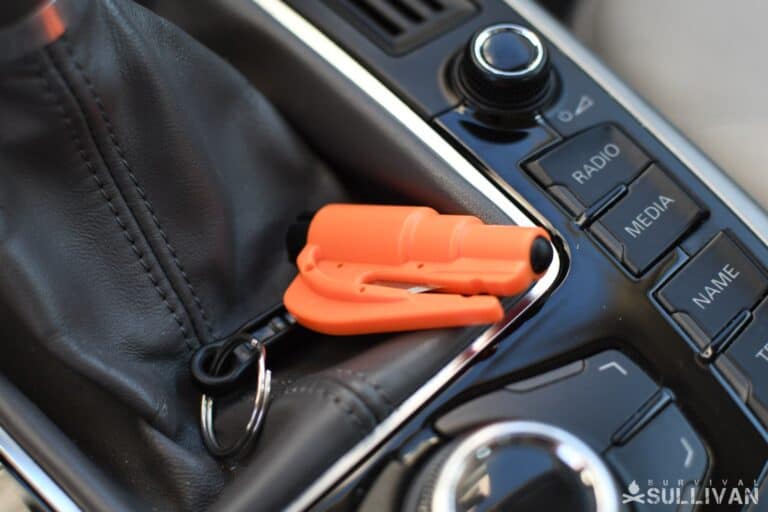
Don’t:
- Try to go through the windshield. Laminated windshields will shatter, but not break, trapping you. Don’t waste your time. Kicking them out is likewise tough to pull off, and any amount of water over it will make this very challenging.
- Open the door if you have multiple passengers in the car. The car will sink much quicker than a window exit. Spare a few seconds to free everyone from their belt and secure small children before making the window exit.
Watery crashes are scary, but remembering a few simple procedures and keeping your head will keep you alive.
Vehicle Survival Kit
Crashes can happen anytime and anywhere, so it makes sense to have a dedicated stash of gear and supplies in your vehicle to supplement any Go-Bag or BOB you may be carrying.
Disclosure: This post has links to 3rd party websites, so I may get a commission if you buy through those links. Survival Sullivan is a participant in the Amazon Services LLC Associates Program. As an Amazon Associate, I earn from qualifying purchases. See my full disclosure for more.
A good vehicle survival kit will contain the following:
- First Aid Kit – For injuries great and small.
- Road Flares / Reflective Triangles – For increasing visibility to other drivers after a crash.
- High-Vis Mesh Safety Vest – Same as above, but for you.
- Blankets – In case of cold weather, also helpful for treating shock and making crash victims comfortable. A sturdy blanket can be used as an improvised stretcher.
- Flashlights – For signaling, visibility and safety.
- Water, Bottled – For hydration and in case of stranding. Can be used in radiator in a pinch.
- High-Calorie Snacks – In case of stranding.
- Warm Jacket and Hat – In case of cold weather. Can help with shock.
- Gloves – Sturdy ones, for dealing with sharp glass, metal, and hot parts.
- Extrication Tool – For getting others out of their cars, or passengers out of yours.
- Flat Repair Kit – Includes spare tire, patch kit, fix a flat, compressor, etc.
- Tools and Spare Parts – Common spare parts and belts for your vehicle, along with the tools and know-how to take care of common breakages.
After a Crash
Dealing with the aftermath of a crash can be harrowing. Anything worse than a fender bender will result in injuries, perhaps severe ones. You must know what the priorities of intervention are depending on what you are facing when dealing with a serious crash.
If injured or not, stay in place until you are sure you can exit the vehicle safely. Be alert to downed power lines, jagged metal, leaking fuel or oil, etc. If there is a risk of fire, get out ASAP, whatever it takes.
Similarly, do not attempt to move a victim who may have spinal injuries. Only move someone you suspect so afflicted if they are facing mortal threat from fire or other hazards.
As soon as you are able, call 911. Calmly detail your location and the nature of the accident along with the number of victims and the likely extent of their injuries.
Additionally, you must act quickly to ensure you are at no more risk of being struck or run down. Deploy your triangles or road flares as soon as you can to mark the crash area.
If you have your first-aid kit, and know how to make use of it, get to work until medics arrive on scene. Don’t forget to treat your own injuries first; you are no good to anyone if you go down.
Even if you do not feel injured, the effects of shock and adrenaline will usually mask typical symptoms of auto injuries. Always, always, always get evaluated by a doctor, no exceptions!
Conclusion
Car wrecks are the most common and statistically dangerous incident preppers will encounter, and certainly the most dangerous activity nearly any of us will engage in on a daily basis.
Don’t treat cars and driving as mundane parts of life and ignore the risk they pose. It is up to you to be prepared for the pervasive and persistent hazards posed by car crashes.
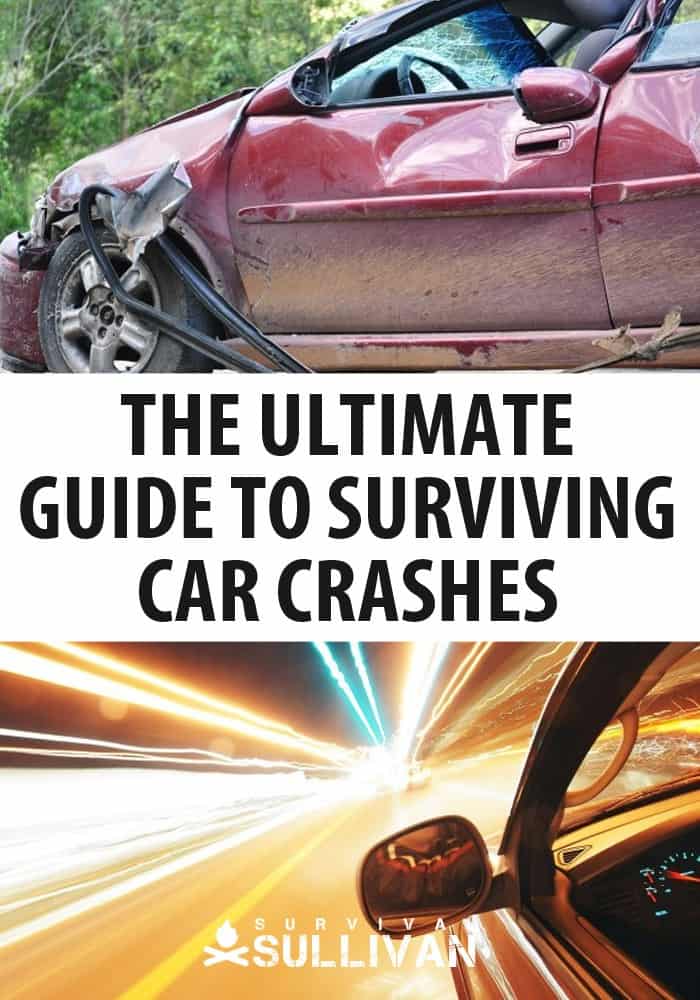

Charles Yor is an advocate of low-profile preparation, readiness as a virtue and avoiding trouble before it starts. He has enjoyed a long career in personal security implementation throughout the lower 48 of the United States.

Thank you for all of this information. A lot of it I already knew, but there’s quite a bit that I didn’t. Being a driver of 50 some years, I have been in a few of my own. I walked out of my worse one, with help. Being on the road, I usually get to the accident long after its happened, usually in a lineup. Since I drive a medical transport vehicle, I normally am very conscious of what’s around me.
Thank you for the updated information.
I would add learn to accept your limitations. As we age it’s hard to accept we just can’t do all the things that were once easy. I’m 73; in the last couple of years I’ve had to give up night driving. I live in a small town so if I HAVE to make a run to Walmart I can but it’s really not a good idea. Our hearing usually isn’t as acute &, for many of us, neither is our eyesight. I hate these limitations but they simply mean I have to give myself a little more time & take a little more care.
One other factor is your driving mind set. When I drive I assume the following:
1) Everyone on the road but me is an idiot
2) Everyone one the road but me is distracted
3) Everyone on the road but me has no spatial or situational awareness
4) I am the only person on the road who has and maintains 100 % control of their vehicle at all times
5) Everyone on the road is trying to kill me
6) Every cop on the road is looking for any excuse to pull me over and beat the crap out of me
During my 26 years as a professional firefighter, I received roughly 2000 hrs of defensive driving and emergency vehicle operations training, and my mind set evolved from my training and experiences in the fire service.
I even turn off my radio ( I love my rock n roll) and I ignore the hands free cell phone when traffic or road conditions dictate
Having ridden motorcycles for over 55 years – I stopped when I when I was 70 – I agree with all that wrote. I say “they are out to get me” whether in my car or my bike. I had one minor mishap on my bike in all those years on the road ay 5 mph in Key West, FL.
Almost killed recently when an18-wheeler pushed my Corvette 1/4 mile down the road in Maryland. I am not paranoid! I am still recovering!
Defensive driving, leaving ample room for escape, doing everything thing right. Bad things can still happen.
Charles,
Thank you for another great article. If there are two significant/severe risks we can address, good driving habits and not smoking are two of the best. No drugs goes unspoken.